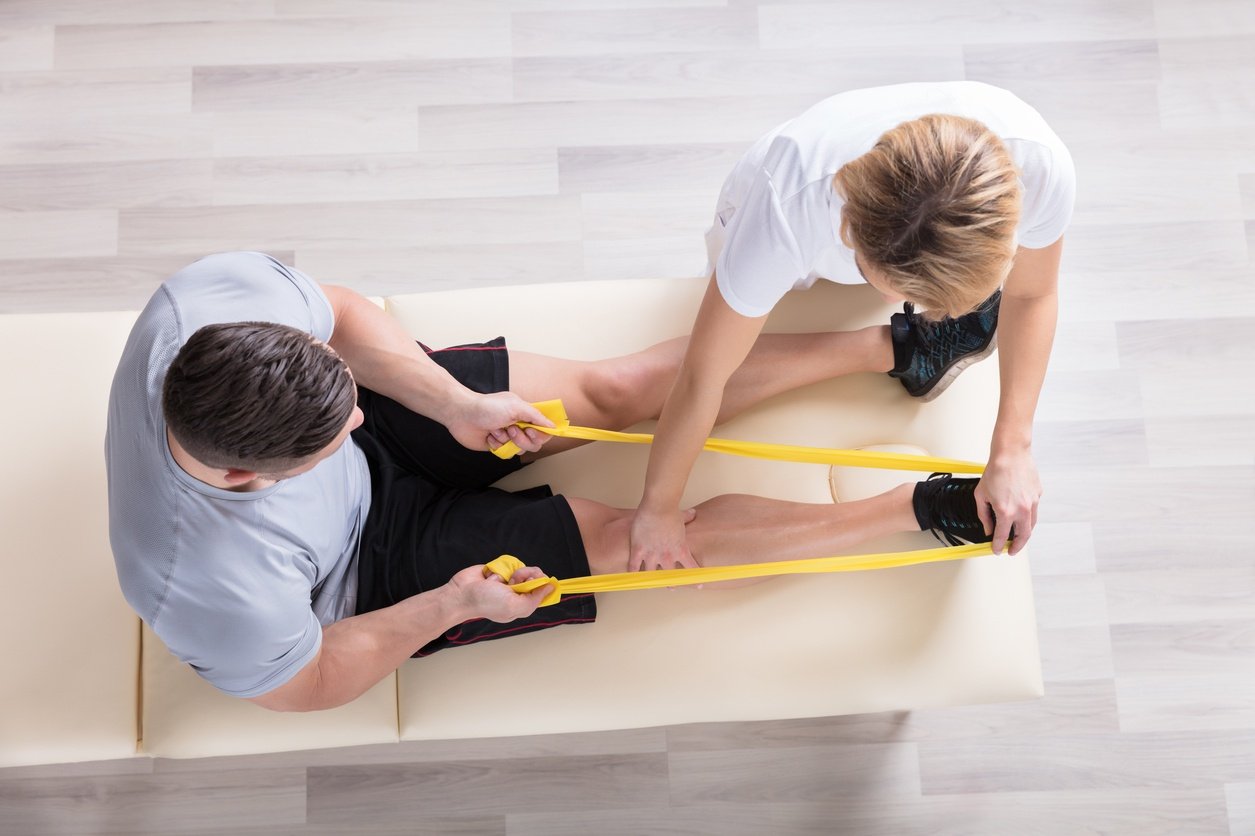
Physical therapy is a growing and thriving healthcare field. According to the American Physical Therapy Association (APTA), the demand for physical therapists (PTs) will continue to grow between now and 2020. According to the Bureau of Labor Statistics, employment of PTs is expected to grow much faster than the average for all occupations, increasing by 36 percent between 2014 and 2024.
“Physical therapists examine patients and develop a plan of care that promotes movement, reduces pain, restores function, and prevents disability,” states the APTA site. PTs use therapeutic exercise and functional training to achieve healthcare goals with the patient.
Special PT Equipment
Along with common diagnostic equipment, such as a blood pressure cuff, stethoscope, and pupil gauge, a PT student will learn how to use the following tools:
Goniometer: This device is used to measure the range of motion around a joint in the body. It is made up of two “arms”, a stationary arm and a moveable arm. Goniometers come in several sizes in order to measure different joints, from fingers to hips and knees. A physical therapist will use a goniometer to assess baseline mobility, as well as to monitor the effectiveness of therapy on movement.
Monofilament foot screen test: This is an assessment tool most often used to screen foot sensation in patients with diabetes. It is also used to detect peripheral neuropathy and for assessing the loss of protective sensation. It helps healthcare providers ensure that patients aren’t suffering ulcerations or other complications to the feet that would result in pain, infection, and limited movement.
Exercise bands: Also known as resistance bands, exercise bands are usually loops of latex or rubber that are used to strengthen muscles.
PT Practice Settings
- Acute Care – This is a hospital setting in which physical therapy is provided for a short time so that a patient can be discharged in a timely manner. Patients are recovering from illness, surgery, accidents, or trauma.
- Rehabilitation Settings – Rehabilitation units or facilities provide a couple of different types of PT. In a rehab hospital, therapists treat patients with intense PT, often more than three hours a day. in order to improve independent living skills. In sub-acute rehabilitation, PT is less intense and is for longer-term medical or rehabilitation care.
- Extended Care Facilities – These are usually senior living settings, where elderly patients are provided with long-term nursing care, rehabilitation, and other services.
- Sports Fitness – In sports fitness PT, patients are focused on wellness and health. In fitness centers and sports training facilities, the emphasis is more on preventing illness and injury, and promoting healthy living.
- Home Health – As the name implies, this is PT that takes place in a home setting. Although most often supplied in the patient’s residence, therapists may also work out of their own homes, a hospice or group home setting, or a residential facility. These patients range in age from pediatric patients who may have developmental delays, pediatric and adult patients with disabilities or injuries, and senior citizens who want to continue to live at home and have quality of life.
- Private Practice – In a fitness center or other outpatient setting, patients visit with their PTs for short appointments, usually to address orthopedic and neuromuscular injuries or impairments.
For information about getting an education in PT, see the APTA PT Education Overview page. If you are an educator in PT, please check out our Pre-filled PT Student Health Totes, which come with the diagnostic equipment your students need to become familiar with in order to succeed. We have developed a PT Basic Tote and a PT Advanced Tote.







